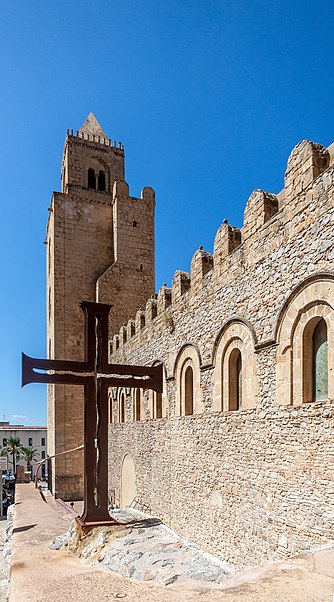Cefalù Cathedral, Cefalù

Facts and practical information
Nestled in the picturesque town of Cefalù on Sicily's northern coast stands the magnificent Cefalù Cathedral, an architectural marvel that beckons tourists from around the globe. This grand basilica, a testament to Sicily's rich history, was erected in 1131 under the reign of the Norman King Roger II.
The cathedral's imposing facade is a striking example of Norman architecture, with its twin towers and elaborate Byzantine mosaics. The most renowned of these is the Christ Pantocrator mosaic in the apse, a stunning piece of art that captures the essence of Byzantine influence on Norman culture.
Visitors are often captivated by the cathedral's harmonious blend of styles, which include Romanesque, Gothic, and Baroque elements, reflecting the various periods of Cefalù's history. The interior of the basilica is equally impressive, with its soaring columns and an atmosphere of serene spirituality.
The Cefalù Cathedral is not only a place of worship but also a significant historical site, designated as part of a UNESCO World Heritage Site in 2015, along with the Palermo Cathedral and the Monreale Cathedral, as part of the Arab-Norman Palermo and the Cathedral Churches of Cefalù and Monreale listing.
For those planning a visit, the cathedral is open to the public year-round, offering a glimpse into the past and an opportunity for quiet reflection. It is advisable to check the visiting hours beforehand as they may vary, and there may be times when the cathedral is closed to tourists due to religious services.
Cefalù Cathedral – popular in the area (distance from the attraction)
Nearby attractions include: Capo Cefalù Lighthouse, Abbey of Thelema, Rocca di Cefalù, Church of Purgatory.













